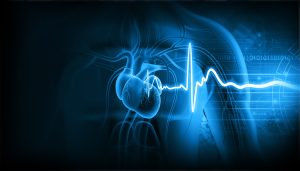Articles / Do you track which arm you give a vaccine booster in?

Most GPs are guided by their patients’ preferences when they decide which arm to administer booster vaccinations in—but new research from Sydney’s Garvan Institute and the Kirby Institute at UNSW has found it might matter more than previously thought.
Receiving a booster vaccine in the same arm as the first dose can generate a more effective immune response more quickly than if its given in the other arm, the study published in the journal Cell showed.
The researchers found that when a vaccine is administered, specialised immune cells called macrophages become ‘primed’ inside lymph nodes. These macrophages then direct the positioning of memory B cells to more effectively respond to the booster when given in the same arm.
The findings were first made in mice, but then validated in 30 human volunteers who were given the Pfizer COVID vaccine— 20 participants received the booster vaccine in the same arm as the first dose, while 10 received it in the opposite arm.
“Those who received both doses in the same arm produced neutralising antibodies against SARS-CoV-2 significantly faster – within the first week after the second dose,” says Ms Alexandra Carey-Hoppé, co-first author and PhD student from the Kirby Institute.
“These antibodies from the same arm group, were also more effective against variants like Delta and Omicron. By four weeks, both groups had similar antibody levels, but that early protection could be crucial during an outbreak,” says Dr Mee Ling Munier, co-senior author and Vaccine Immunogenomics group leader at the Kirby Institute.
However, if you’ve been administering the COVID jab in different arms there’s no cause for panic, she reassures. “Our research shows that over time the difference in protection diminishes.”
“But during a pandemic, those first weeks of protection could make an enormous difference at a population level. The same-arm strategy could help achieve herd immunity faster – particularly important for rapidly mutating viruses where speed of response matters.”

The researchers previously discovered that memory B cells, which are crucial for generating antibody responses when infections return, linger in the lymph node closest to the injection site.
Using intravital imaging at Garvan, they found that memory B cells migrate to the outer layer of the local lymph node, where they interact closely with the macrophages that reside there.
When a booster was given in the same location, these ‘primed’ macrophages – already on alert – efficiently captured the antigen and activated the memory B cells to make high quality antibodies.
“Macrophages are known to gobble up pathogens and clear away dead cells, but our research suggests the ones in the lymph nodes closest to the injection site also play a central role in orchestrating an effective vaccine response the next time around. So location does matter,” says Dr Rama Dhenni, the study’s co-first author, who undertook the research as part of his Scientia PhD program at Garvan.

Allergen Introduction – Practical Tips for GPs

Obstructive Sleep Apnoea



Very overestimated
Moderately/slightly overestimated
Quite accurate
Moderately/slightly underestimated
Very underestimated
Listen to expert interviews.
Click to open in a new tab
Browse the latest articles from Healthed.
Once you confirm you’ve read this article you can complete a Patient Case Review to earn 0.5 hours CPD in the Reviewing Performance (RP) category.
Select ‘Confirm & learn‘ when you have read this article in its entirety and you will be taken to begin your Patient Case Review.





